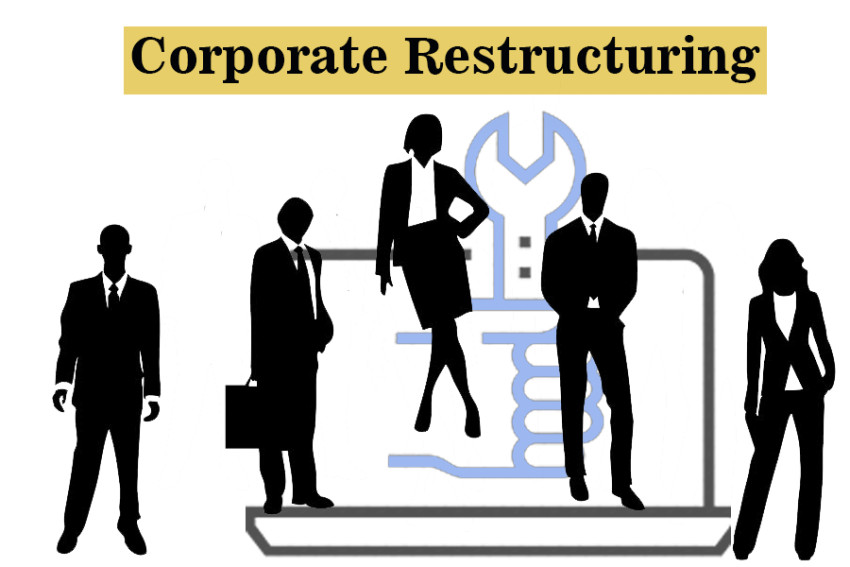
Corporate Restructuring:
Corporate restructuring encapsulates the deliberate redesigning of an organization's structure, operations, or ownership to achieve specific objectives. It's a strategic maneuver that aims to optimize resources, enhance competitiveness, and position the company for sustained success. In today's business environment, Corporate Restructuring has evolved from being reactive to proactive, with a focus on transformation rather than mere survival.
Building Stronger Foundations:
In the dynamic realm of business, the concept of building stronger foundations has gained paramount significance. It signifies a deliberate effort to fortify an organization's core structure, processes, and strategies. The goal is to ensure resilience and long-term viability in the face of market fluctuations and evolving industry landscapes. Building stronger foundations encompasses a holistic approach that addresses not only immediate challenges but also future growth and adaptability.
Evolution of Restructuring:
The evolution of corporate restructuring reflects the changing nature of business dynamics. It has shifted from crisis-driven measures to a proactive tool for growth and adaptability. Organizations now approach restructuring as a strategic endeavor, capitalizing on opportunities and embracing change to gain a competitive edge. This evolution demonstrates a mindset shift towards viewing restructuring as a means to reshape and reposition, rather than simply downsize.
Organizational Transformation:
Organizational transformation, a core aspect of modern restructuring, entails a profound metamorphosis of an organization's culture, processes, and strategies. It's a response to the evolving demands of the business landscape, where innovation, agility, and customer-centricity are paramount. Through transformation, companies seek to align their structures with their vision, fostering a culture of continuous improvement and adaptability.
Strategic Overhaul:
Strategic overhaul involves a comprehensive review and recalibration of an organization's goals, priorities, and approaches. It is an essential component of modern corporate restructuring, where the emphasis is on realigning the business to thrive in the changing market dynamics. This involves rethinking business models, exploring new markets, and leveraging emerging technologies to drive sustainable growth.
Business Revitalization:
Business revitalization encompasses the revitalization of an organization's vitality, relevance, and performance. It's about breathing new life into existing operations through strategic restructuring initiatives. By identifying underperforming areas and reimagining processes, organizations can inject fresh energy and enthusiasm, enabling them to seize new opportunities and achieve greater efficiency.
Restructuring Strategies:
Restructuring strategies are the deliberate courses of action adopted to reshape an organization's framework for improved outcomes. These strategies encompass diverse approaches, such as mergers, divestitures, process reengineering, and innovation-driven transformation. Successful restructuring strategies are not only tailored to specific challenges but also aligned with the organization's long-term goals.
Change Management:
Change management is the art of guiding individuals and teams through transitions brought about by restructuring. It involves clear communication, empathetic leadership, and a focus on minimizing disruptions while maximizing acceptance of change. Effective change management ensures that employees understand the rationale behind restructuring and are empowered to contribute to its success.
Innovation in Restructuring:
Innovation in restructuring involves applying creative and forward-thinking approaches to the transformation process. This may include adopting new technologies, exploring novel business models, and fostering a culture of experimentation. Innovations in restructuring drive adaptability and position organizations to capitalize on emerging trends.
Reshaping Organizations:
Reshaping organizations through restructuring involves redesigning the structural and operational aspects to better align with strategic goals. It's a deliberate effort to create leaner, more agile, and customer-focused entities that can navigate change and respond effectively to market demands.
Modern Business Landscape:
The modern business landscape is characterized by rapid technological advancements, shifting consumer preferences, and global interconnectedness. Restructuring in this context is not merely a response to challenges but an essential tool for staying competitive and relevant in an environment of continuous change.
Adapting to Change:
Adapting to change is a fundamental principle that underscores the evolution of corporate restructuring. Organizations must embrace change as a constant and position themselves to adapt swiftly. Restructuring strategies are designed with adaptability in mind, ensuring that organizations can pivot, innovate, and thrive amid uncertainties.
Restructuring Success:
Restructuring success is measured not only by short-term gains but by long-term sustainability. A Successful Restructuring Leads to improved performance, increased agility, and enhanced market positioning, setting the stage for future growth.
Reengineering Processes:
Reengineering processes is a key component of restructuring. It involves critically evaluating existing workflows and operational methods and redesigning them for greater efficiency, cost-effectiveness, and alignment with strategic objectives.
Improved Efficiency:
Improved efficiency is a central outcome of successful restructuring efforts. By eliminating redundancies, optimizing processes, and leveraging technology, organizations can achieve higher productivity and resource utilization.
Leadership in Restructuring:
Leadership in restructuring involves guiding the organization through change with vision, empathy, and strategic direction. Effective leadership fosters a positive attitude towards restructuring, encourages collaboration, and ensures alignment with the organization's mission.
Operational Resilience:
Operational resilience is the ability of an organization to adapt, recover, and thrive in the face of disruptions. Restructuring enhances operational resilience by creating flexible structures and processes that can withstand challenges and capitalize on opportunities.
Restructuring Challenges:
Restructuring challenges encompass obstacles that organizations may encounter during the transformation process. These challenges can range from employee resistance to cultural shifts and require careful planning, communication, and strategic navigation.
Future of Business:
The future of business lies in the ability to navigate change and seize opportunities. Restructuring is a strategic tool that positions organizations to shape their future, innovate, and remain relevant in a rapidly evolving landscape.
Sustainable Growth:
Sustainable growth is the ultimate objective of corporate restructuring. By building stronger foundations and embracing strategic change, organizations set themselves on a path of continuous growth that benefits stakeholders, employees, and the business ecosystem as a whole.





